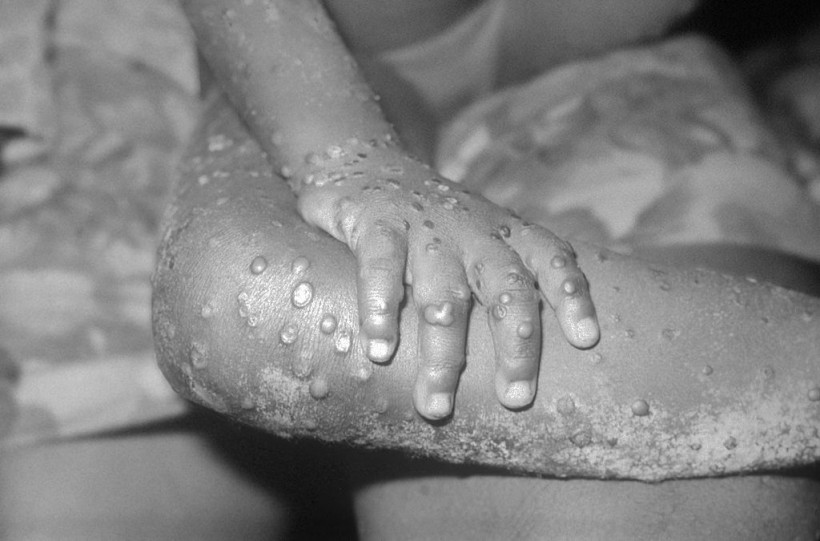(Photo : Photo Courtesy of the CDC/Getty Images)
The rare, zoonotic disease is now identified in non-endemic countries. Monkeypox, first identified in colonies of laboratory monkeys, has been reported mostly in humans in central and western Africa.
The viral disease is caused by a pathogen in the Orthopoxvirus family, transmitted through contaminated body fluids or close contact with infected humans or linens. While monkeypox is fortunately regarded as self-limiting and less severe than its close relative smallpox, many assert it could be the next pandemic when the virus had made multi-country outbreak, ScienceAlert reported.
Nonetheless, the virus that gives rise to a fever, headaches, muscle aches, swollen lymph nodes, and exhaustion, is still a major, serious concern as it carries a risk of ongoing complications, including effects of sepsis and encephalitis to blindness from eye infections.
Fatal complications can be prevented through medical treatment or vaccination.
About the Monkeypox Virus
Monkeypox was first discovered in 1958 in monkeys kept for research, hence the name. Its first human case was recorded in 1970 in the Democratic Republic of the Congo (DRC) during a period of intensified effort to eliminate smallpox, according to Centers for Disease Control and Prevention (CDC). The natural reservoir of monkeypox remains unknown.
Cases reported outside of Africa were linked to international travel or imported animals. However, an epidemiological update by the European Centre for Disease Prevention and Control (ECDC) says several other European and other countries have reported cases of monkeypox not linked to travel.
"As of 25 May, a total of 118 confirmed MPX cases have been reported from 12 EU/EEA Member States," the agency reported. Most cases were recorded in young men, self-identifying as MSM. There have been no deaths and a general clinical presentation is described to be mild.
To date, majority of infections are still found in central African nations, although outbreaks have been recorded in several neighboring countries.
Also read: Astronauts in their First Long-duration Space Missions Show Changes in Their Brains
Could it be the Next Pandemic?
The 2022 monkeypox outbreaks have been making headlines since a case was first confirmed early May in a British resident who, after travelling to Nigeria where the disease is known to circulate, presented symptoms consistent with the disease, and became an index case of the outbreak in the UK.
However, this is not the first time that the virus was detected outside of African nations.
Several cases of the illness were reported to the CDC across six US states in mid-2003, traced back to infected prairie dogs purchased from an animal distributor in Illinois. The infection was also detected in the UK in 2018, all infected had recently been to Nigeria.
According to experts, the current outbreaks around the globe, including the US, UK, Spain, Portugal, Italy, and Australia, could appear as a potential pandemic, on top of the still-emerging SARS-CoV-2. However, most suspected and confirmed cases show it was due to close intimate contact primarily between men, with no indication of mutation - but likely a "sudden surge" in travel with easing COVID restrictions.
Although the World Health Organization (WHO) sees no need to restrict travel or engage in a vaccination program, it is advised to remain vigilant should concerns continue to escalate.
Related article: Wing Virus Has Potential To Wipe Out Honeybee Populations Worldwide
© 2024 NatureWorldNews.com All rights reserved. Do not reproduce without permission.






